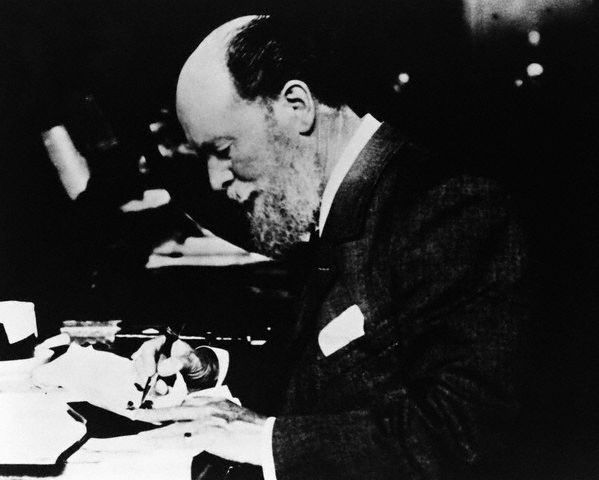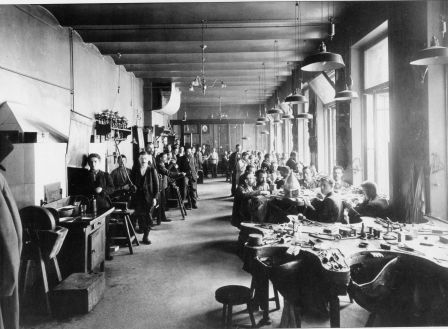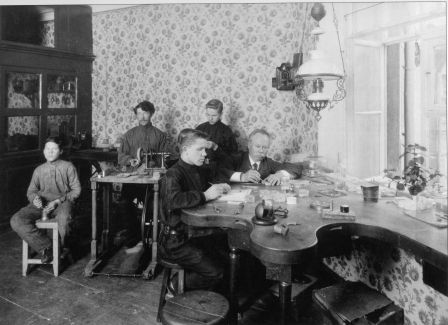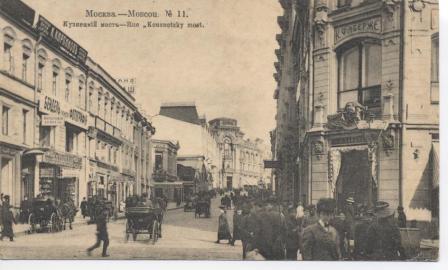The history of Faberge
At the end of the 19th and early 20th centuries Russian jewelry art enjoyed a golden age. Economic growth led to the appearance of a new financial and commercial elite that became regular clients of jewelry firms and workshops. From the many names known at that time only one managed to become a symbol of the epoch and an embodiment of Russian jewelry art for the international market.

Carl Fabergé was a brilliant artist and a great businessman. Not only was he the official Russian Imperial Court Jeweler, but he also supplied jewelry to the most prominent clients in the world, such as the kings of Sweden and Norway, the King of Great Britain, the King of Siam and many others. Fabergé won numerous awards, such as Russia’s St. Stanislav and St. Anna prizes, the Bulgarian Commander prize, and the French Honourable legion prize.
Fabergé also received a number of gold medals at Russian and international exhibitions. Finally, he created the largest jewelry firm in Russia, which eventually defined the jewelry production at the turn of the 20th century. At this time Saint Petersburg was considered one of the jewelry capitals of the world.
Since a young man Carl was an inquisitive boy closely observing his father’s work. Gustav Fabergé told his son about his education with the top five jewelers of St. Petersburg, and his tutors included the Court jeweler Keibel, and the master Spiegel. Hoping to give the best education to Carl, Gustav Fabergé sent his son to the German school of Saint Anna in St. Petersburg. Later Carl was sent to study abroad at the Dresden Trading School, and the Commercial College in Paris. Meanwhile, he also learnt jewelry art from the Frankfurt goldsmith Joseph Friedman.

In 1865, having received a great fundamental education thorough professional training and experience, Carl Fabergé returned to Russia where under the direction of the skilled goldsmith, Hiskiasa Pendina, he continued to improve his skills in jewelry art. Carl Fabergé was a rare person possessing a true talent of the artist-designer, and also had a commercial streak necessary for starting a business. Along with highly-qualified employees, this helped guarantee his success.
Having acquired a fabulous European education, Carl Fabergé required the same quality of knowledge from his employees who were the leading artists-designers in the Russian Empire. Even to this day, the style, techniques and quality of their work serves as an example to many international jewelry masters. Fabergé demanded much from his employees, and they went through rigorous training, and were educated in Western art and technologies. Their education took years. Carl Fabergé set his prices by taking into account an item’s artistic value and the level of craftsmanship; he didn’t give too much importance to the amount of precious materials. Thorough and precise work was the main attributes of Fabergé’s work.
Success first came to Fabergé after the creation of the Grecian art collection, which conveyed traditional beauty. In 1882 the Moscow branch presented a collection of copies of Kerchensky jewelry items that attracted a lot of public attention and earned much praise from highest circles of society. After the exhibition, Fabergé was awarded a gold medal. Empress Maria Fiodorovna was impressed and ordered from Fabergé cuff links with the image of cicadas that according to ancient Greeks brought luck to their owner. In 1885, after many years of flawless work and cooperation with the Hermitage, Fabergé was granted the title of Purveyor to the Imperial Court, and earned the right to use the State Emblem on the firm’s letterhead. That same year the firm received a gold medal at the industrial art exhibition in Nuremberg, and another gold medal at the Copenhagen industrial art exhibition in 1888.

The constant increase in orders and the expansion of manufacture led to the need to create independent workshops. The owners of such workshops had to work using the Fabergé’s sketches and drawings, and had to work exclusively for the firm. The jewelry workshops of A. Holmström and A. Thielemann were established, as well as W. Reimer’s, E. Kollin’s and M. Perchin’s goldsmiths. There were also the silversmiths J. Rappoport’s, V. Aarne’s and family dynasty Wäkevas, and many others. Every workshop specialized in the production of certain items. In 1887, a Moscow factory was established which united under one roof all the different crafts that in Petersburg were divided between different workshops. Some production areas, such as jewelry, gold and enamel production were not as good in terms of quality and quantity compared to Saint Petersburg manufacturers. The production of silver items in Moscow was superior, however, and starting in 1900 all major silver items were made by the Moscow factory.
In August 1890 Carl Fabergé was appointed Appraiser of the Cabinet of His Imperial Majesty, and in 1910 he received a title of Court jeweler. In 1890, Fabergé participated in several exhibitions in Russia and abroad, and was granted numerous awards and medals that led to a significant number of orders from all over the world. In 1900 World Fair was held in Paris where Fabergé participated “hors concours”, and Carl Gustavovich was selected as a judge. Consequently, this exhibition laid the foundation for intensive foreign trade.

Since most customers were based in London, Carl Fabergé established a shop there in 1903. London was not only a strategic place for trade with the British but it also became a centre of trade with clients from France, America and Asia. Representatives of the London shop traveled across the world collecting orders that were later passed on to the Saint Petersburg and Moscow workshops. Gold, enamel and large silver works were especially appealing to foreign customers.
The reason for Fabergé’s success was the high quality of hand-made items created by exceptional professionals. This was in contrast to foreign manufacturers that replaced manual production with machines that noticeably affected the quality.

Twice a year Fabergé representatives from London traveled to India, China and Siam. The Siamese Royal Family and Court was the most significant international client. They were especially fond of nephrite carved items, and tiny portraits of the King and the Queen on enamel engraved with diamonds.
International trade continued to go well even during World War I. However the domestic trade was hit by the recession and a decrease in demand for luxury items, hence, the jewelry industry suffered. Even large workshops and firms were compelled to reduce manufacturing; many masters and apprentices were called up for military service. However, stagnation in trade was observed only in the first year of the war. Fabergé decided to manufacture products for military needs and sent requests for orders to military departments. The answer came a year later. Meanwhile, the firm started manufacturing items out of copper, producing mainly saucers, mugs and snuffboxes with the Imperial emblem and other gifts for soldiers and officers.
The Moscow silver factory was converted for the production of these military orders, and an additional workshop opened in Saint Petersburg where jewelers, silversmiths, and newly appointed employees were working. All products made in this period – shock and remote tubes, artillery shells, parts of devices, syringes and other items – were executed with great accuracy and thoroughness. The factory and workshops operated until the October Revolution of 1917, and a year later Fabergé closed its doors for good.
